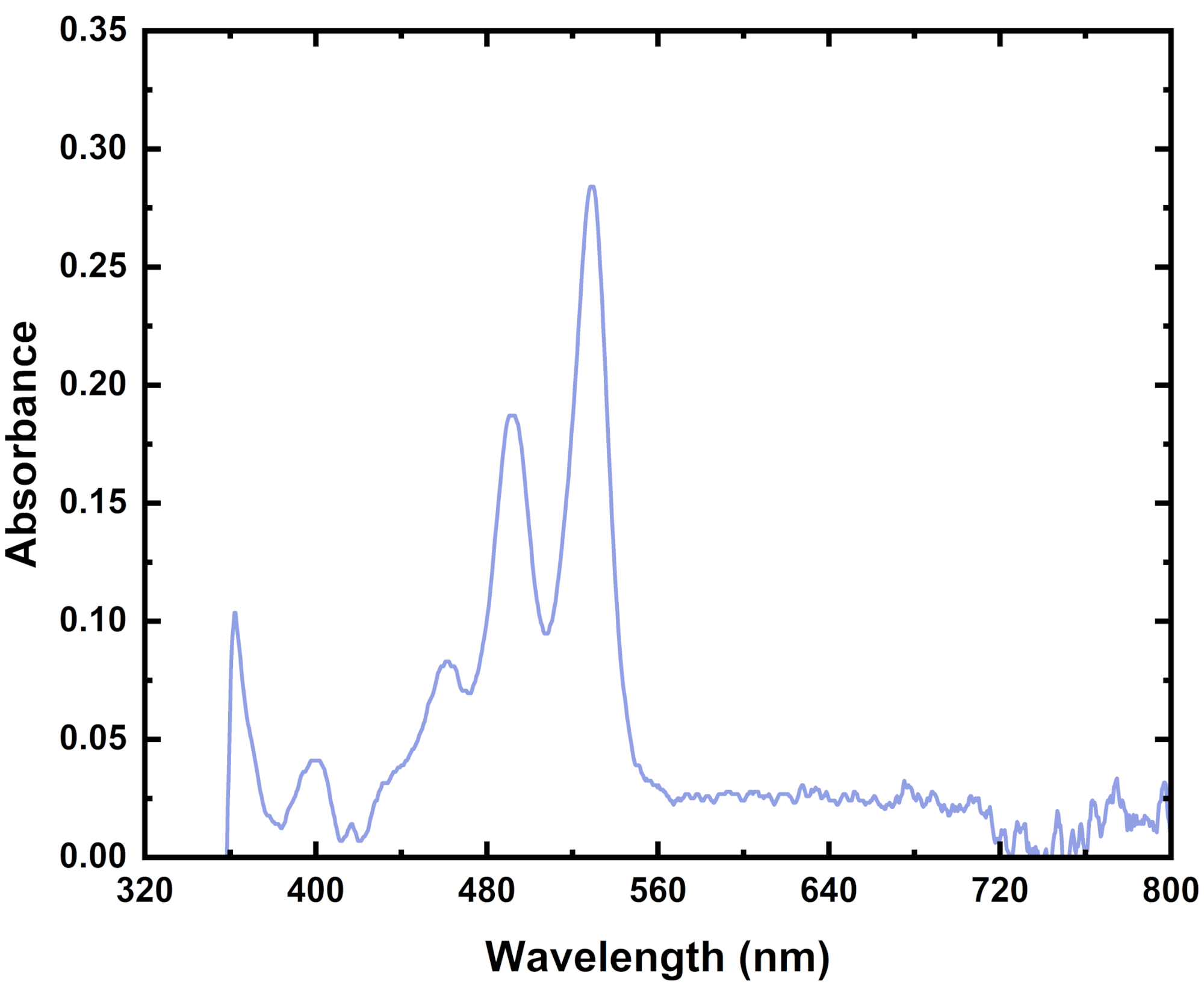Transmittance & Light Transmission: Transmittance to Absorbance

Transmittance measurements quantify how transparent or opaque your samples are. To measure sample transmittance, you measure the ratio of light that goes into a sample relative to the light that leaves. You can measure this using a visible light source and a USB spectrometer.
Light Transmission, Transmittance & Transmissivity
These terms can be used interchangeably. However, there is a subtle difference between them. This can lead to some confusion.
Transmission measures the amount of light that can pass through a material. This is usually stated as a percentage and is meant to provide an easy metric to assess visible light transmission through an object. For example, the perfect transparent material will have 100% transmission.
Transmittance refers the amount of light energy that a material absorbs or disperses. This is often measured as light intensity at each different wavelength. Transmittance is often used in research and is presented as a spectrum.
Transmissivity measures how much electromagnetic energy a material will transmit. This is very similar to transmittance. However, transmissivity is also used in hydrology, to relate to the flow of water through a system. For this reason, most people use the term transmittance.
Transmittance to Absorbance
Absorbance is intrinsically related to transmittance. To calculate absorbance, denoted as A, you just take the base 10 logarithm of the transmission:
You can take transform a transmission spectrum into an absorbance spectrum, post measurement. The table below shows absorbance measurements calculated from tranmittance values.
| Transmittance | Absorbance |
|---|---|
| 0.01 | 2 |
| 0.02 | 1.7 |
| 0.05 | 1.3 |
| 0.1 | 1 |
| 0.2 | 0.7 |
| 0.5 | 0.3 |
| 1 | 0 |
Alternatively, using the Ossila spectroscopy software, you can measure absorbance spectrum directly using the "Absorption" setting.
Transmittance Applications
Taking transmittance and transmission spectra of your samples is necessary in for a wide range of materials and devices:
- Optoelectronic and optical devices often requires light getting into or out of a device. Therefore understanding the transmittance capabilities of all materials in the device is important to optimize performance.
- 2D materials and Charge Transport Layers with excellent conductivity and high transparency are important for use in many electronic devices. Transmittance measurements is important characterizing new promising materials.
- Biological samples rely on light for many fundamental principles.
- Food samples including meat use transmittance measurement to estimate the percentage of fat in a piece of meat.
How to Measure Transmittance
To measure transmittance of visible light through a sample, you will need:
- A broadband light source
- A USB spectrometer
- Some kind of sample holder
Transmittance through transparent samples can be very hard to measure. If you are measuring transparent materials, you should use optical fibers to improve signal-to-noise ratio.
You should also consider in your sample preparation, the substrate or cuvette you are using. Quartz glass has great transmission qualities in the visible light region, so we would recommend using quartz substrates or cuvettes to reduce any absorbance of transmitted light.
Taking Transmittance Measurement
- Take a background spectrum as a noise baseline.
- Cover the light source
- Record the spectrum
- Take a reference spectrum, I0
- For solutions, use a cuvette containing the solvent
- For thin films, use a blank, uncoated substrates
- Uncover the light source
- Place a blank sample in the sample holder
- Take transmission sample
- Place your sample in
- Take another transmission measurement
Notes on Measurement
Loss of Signal - You should do what you can to reduce loss of signal when you take this measurement. Light can be lost through unwanted absorption, reflection or dispersion. To reduce these effects, you can:
- Use high transmittance materials (such as Quartz coated glass) to reduce unwanted absorbance.
- The light source should align the incoming and outcoming light source in a straight line. If incoming light hits the sample surface perpendicularly, this will reduce reflection effects.
- Using fiber optic cables can reduce loss of signal through dispersion.
Noise - With low-signal measurements, noise in measurements can drastically affect this. Every spectrum introduces its own noise into the final measurement. To reduce noise in your measurements can:
- Choose an integration time which produces a clear reference signal spectrum (around 90% of the spectrometer's saturation values).
- Increase spectral averaging. Taking multiple measurements is the most obvious way to counteract noise. Noise in spectrum will decrease by the square root of the number of measurements.
- Highly absorbent samples will obstruct more light, leading to weak or noisy signals. Ideally, the sample's transmission should remain above 0.05 for all measurable wavelengths. If your sample is too absorbent, you can dilute your sample more, or create a thinner/more transparent film.
USB Spectrometer

Learn More
 Absorbance Measurement
Absorbance Measurement
Absorbance measurements are crucial in many areas of scientific research. This article describes how to take an absorbance measurement using an optical spectrometer.
Read more... Optical Spectrometer
Optical Spectrometer
An optical spectrometer, also known as an optical spectrophotometer or spectrograph, is an instrument which measures light intensity across different wavelengths of the electromagnetic spectrum. This typically focuses on wavelengths within the visible light range (between 320-1000 nm).
Read more...